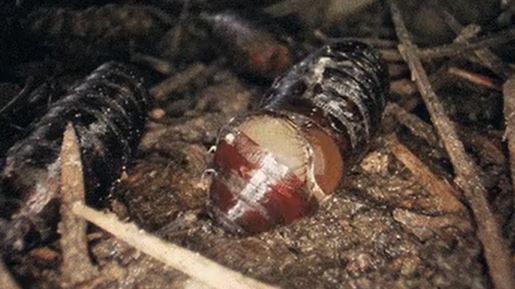Botflies are a type of insect whose larvae burrow under your skin

Botflies: The Horrifying Insects That Burrow Under Your Skin

When it comes to creepy-crawlies, few insects can match the disturbing nature of botflies. These insects belong to the Oestridae family and have a rather chilling habit of laying their eggs on living organisms, including humans. Once these eggs hatch, the larvae burrow under the skin, causing a multitude of health issues and immense discomfort.
 Image Source: ebaumsworld
Image Source: ebaumsworld
Botflies are primarily found in tropical regions around the world, including parts of Central and South America, as well as Africa. They are known for their distinctive appearance, featuring large, bristly bodies with a slight resemblance to bees. However, it is their insidious nature that truly sets them apart from other insects.
The life cycle of the botfly begins when its eggs are deposited on the skin of a host, usually a mammal. Although mosquitos and other insects are responsible for transferring these eggs to their hosts, botflies often target larger creatures like cattle, horses, and rodents, including humans. Once on the skin, the warmth triggers the hatching process, releasing the larvae onto the unsuspecting host.
To gain access to their new home, the larvae will penetrate the skin through various means. This can be both through active movement or by stimulating an involuntary response, such as a scratch or brush. The larvae then make their way through the subcutaneous tissue, causing immense pain in the process.
The host, unfortunately, becomes a living incubator for these creepy larvae. Over several weeks, the larvae continue to grow and develop, feeding on the host’s living flesh. This parasitic relationship can lead to severe infections, abscesses, and tissue damage. The affected individual may experience symptoms such as pain, itching, and sometimes even fever.
Although botfly infestations are generally not life-threatening, they are undoubtedly a horrifying experience. The removal of the larvae requires delicate medical intervention, as improper extraction can result in severe complications. Medical professionals often employ techniques such as suffocation, extraction, or surgical procedures to effectively remove the parasites from the host’s body.
In order to prevent botfly infestations, it is crucial to take precautionary measures when traveling to endemic regions. Using insect repellents, wearing long-sleeved clothing, and avoiding contact with insects can significantly reduce the chances of becoming a botfly host. Prompt removal of any suspicious-looking bumps on the skin can also help prevent the larvae from burrowing deeper.
While the existence of botflies may be disturbing, it is important to remain informed about such topics to ensure personal safety and well-being. Understanding the habits and dangers associated with these insects allows us to take the necessary precautions and seek medical attention promptly if needed.
Source: BuzzFeed
Tags
Share
Related Posts
Quick Links
Legal Stuff

